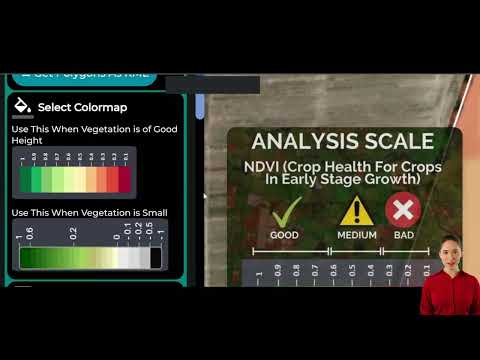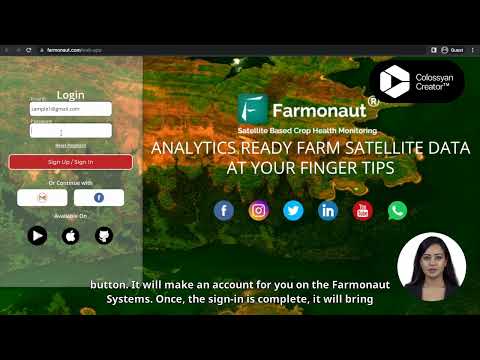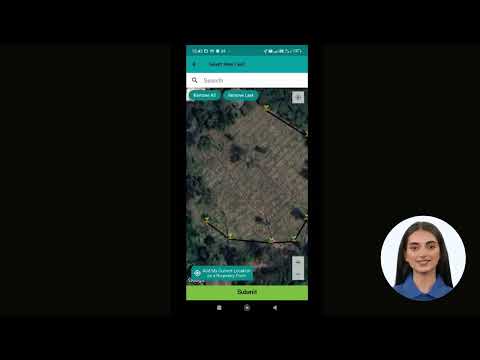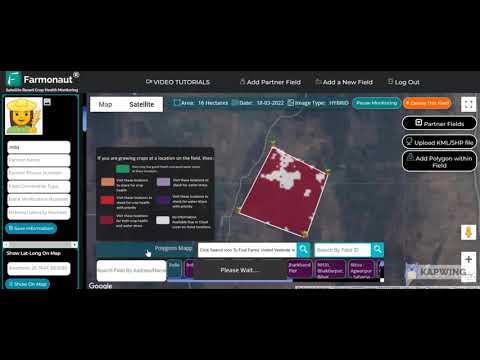Mastering LaTeX Submission: A Comprehensive Guide for Soil Science Manuscript Authors
“LaTeX submissions in soil science journals have increased by 45% in the last 5 years, streamlining manuscript processing.”
Welcome to our comprehensive guide on mastering LaTeX submission for soil science manuscript authors. At Farmonaut, we understand the importance of efficient and precise communication in the field of soil science research. As experts in precision agriculture technology and sustainable farming practices, we’re here to help you navigate the intricate process of submitting your valuable research using LaTeX.

In this guide, we’ll explore the latest advancements in soil science research and how they intersect with the world of academic publishing. From crop management techniques to soil analysis methods, we’ll cover everything you need to know to present your work effectively using LaTeX. Let’s dive in!
Why LaTeX for Soil Science Manuscripts?
LaTeX has become increasingly popular in soil science and agriculture publications due to its ability to handle complex equations, tables, and figures with ease. Its use in our field has grown significantly, reflecting the increasing complexity and precision of our research methods. Here’s why LaTeX is an excellent choice for soil science manuscripts:
- Precise formatting of mathematical equations
- Consistent styling throughout the document
- Efficient handling of citations and references
- Superior table and figure placement
- Compatibility with version control systems
As we delve deeper into sustainable farming practices and precision agriculture technology, the need for a robust typesetting system becomes even more apparent. LaTeX provides the flexibility and power needed to accurately represent our complex data and findings.
Setting Up Your LaTeX Environment
Before we begin the submission process, it’s crucial to set up a proper LaTeX environment. Here are the steps to get started:
- Install a LaTeX distribution (e.g., TeX Live, MiKTeX)
- Choose a LaTeX editor (e.g., TeXstudio, Overleaf)
- Familiarize yourself with basic LaTeX commands
- Download the specific template for your target soil science journal
Remember, each journal may have its own LaTeX template and specific requirements. Always check the journal’s guidelines before starting your manuscript.
Structuring Your Soil Science Manuscript in LaTeX
A well-structured manuscript is crucial for effective communication of your soil science research. Here’s a typical structure for a soil science paper in LaTeX:
\documentclass{article}
\usepackage{amsmath,graphicx,natbib}
\begin{document}
\title{Your Soil Science Research Title}
\author{Your Name}
\date{}
\maketitle
\begin{abstract}
Your abstract here...
\end{abstract}
\section{Introduction}
\section{Materials and Methods}
\section{Results}
\section{Discussion}
\section{Conclusion}
\bibliographystyle{apalike}
\bibliography{your_references}
\end{document}
This structure allows for clear organization of your research, from the introduction of your soil analysis methods to the presentation of your findings on crop management techniques.
Incorporating Soil Science Equations and Formulas
LaTeX excels in typesetting mathematical equations, which is particularly useful in soil science research. Here’s an example of how you might include a soil water retention equation:
\begin{equation}
\theta = \theta_r + \frac{\theta_s - \theta_r}{[1 + (\alpha h)^n]^m}
\end{equation}
Where \(\theta\) is the volumetric water content, \(\theta_r\) and \(\theta_s\) are residual and saturated water contents, \(h\) is the soil water pressure head, and \(\alpha\), \(n\), and \(m\) are empirical parameters.
Handling Tables and Figures in LaTeX
Effective presentation of data is crucial in soil science research. LaTeX provides robust tools for creating tables and including figures. Here’s an example of how to include a table:
\begin{table}[h]
\centering
\begin{tabular}{|c|c|c|}
\hline
Soil Type & pH & Organic Matter (\%) \\
\hline
Clay & 6.5 & 3.2 \\
Loam & 7.2 & 2.8 \\
Sandy & 5.8 & 1.5 \\
\hline
\end{tabular}
\caption{Soil Properties Across Different Types}
\label{tab:soil_properties}
\end{table}
For figures, you can use the following code:
\begin{figure}[h]
\centering
\includegraphics[width=0.8\textwidth]{your_soil_image.jpg}
\caption{Soil Profile Showing Different Horizons}
\label{fig:soil_profile}
\end{figure}
These examples demonstrate how LaTeX can help you present your soil analysis methods and results clearly and professionally.
Citing Sources and Managing References
Proper citation is crucial in soil science research. LaTeX, combined with BibTeX, makes reference management straightforward. Here’s how you can cite a source in your text:
According to \citet{Smith2020}, soil organic matter plays a crucial role in carbon sequestration.
And in your bibliography file (e.g., references.bib):
@article{Smith2020,
author = {Smith, J. and Johnson, K.},
title = {The Role of Soil Organic Matter in Carbon Sequestration},
journal = {Journal of Soil Science},
year = {2020},
volume = {45},
pages = {112-125}
}
This system ensures that your references are consistently formatted and easily manageable, even for extensive literature reviews on topics like climate change and agriculture or sustainable farming practices.
LaTeX Submission Checklist for Soil Science Manuscripts
| Submission Step | Completion Status |
|---|---|
| Prepare LaTeX template | [ ] |
| Format equations | [ ] |
| Include high-resolution figures | [ ] |
| Organize references | [ ] |
| Add appropriate metadata | [ ] |
| Check journal-specific requirements | [ ] |
| Compile final PDF | [ ] |
| Submit to journal portal | [ ] |
Use this checklist to ensure you’ve covered all the essential steps in preparing your soil science manuscript for submission.
Advanced LaTeX Techniques for Soil Science Manuscripts
As you become more comfortable with LaTeX, you can leverage advanced features to enhance your soil science manuscripts:
- Custom Environments: Create specific environments for soil profile descriptions or experimental setups.
- TikZ Package: Use this powerful package to create custom diagrams of soil structures or agricultural processes.
- Algorithms: If your research involves computational methods, use the algorithm or algorithmic packages to present your methods clearly.
- Nomenclature: For papers with many technical terms, the nomencl package can help you create a glossary of terms.
These advanced techniques can significantly enhance the presentation of your research on topics like precision agriculture technology and agricultural water management.

Integrating Farmonaut Data in Your Manuscript
At Farmonaut, we provide cutting-edge satellite-based farm management solutions that can greatly enhance your soil science research. Our API allows you to integrate real-time data into your LaTeX documents, ensuring your manuscript reflects the latest in precision agriculture technology.
For detailed information on how to use our API, please refer to our API Developer Docs.
Whether you’re using our  ,
,  , or
, or  , our tools can provide valuable data for your research on sustainable farming practices and soil conservation strategies.
, our tools can provide valuable data for your research on sustainable farming practices and soil conservation strategies.
“Precision agriculture techniques can reduce water usage by up to 30% while maintaining crop yields in water-stressed regions.”
Journal-Specific LaTeX Requirements
Different soil science and agriculture journals may have specific LaTeX requirements. Here are some general guidelines:
- Use the journal’s provided LaTeX template if available
- Pay attention to figure and table placement requirements
- Follow the journal’s citation style (e.g., APA, Harvard)
- Adhere to specific margin, font, and spacing guidelines
- Include any required declarations or statements as specified by the journal
Always check the journal’s author guidelines before finalizing your manuscript to ensure compliance with their specific requirements.
Troubleshooting Common LaTeX Issues in Soil Science Manuscripts
Even experienced LaTeX users encounter issues. Here are some common problems and their solutions:
- Floating Figures: Use the [H] option to force figure placement.
- Overfull hbox warnings: Break long lines or use \sloppy command.
- Bibliography not appearing: Ensure you’ve run BibTeX and compiled multiple times.
- Equation numbering issues: Use the amsmath package for better control.
- Table formatting problems: Consider using the booktabs package for professional-looking tables.
Remember, patience and attention to detail are key when troubleshooting LaTeX issues in your soil science manuscripts.
Enhancing Your Manuscript with Visual Elements
Visual elements can significantly enhance the impact of your soil science research. Consider including:
- High-resolution soil profile images
- Graphs showing trends in soil health over time
- Maps illustrating spatial variations in soil properties
- Diagrams of experimental setups or sampling designs
- Infographics summarizing key findings or methodologies
LaTeX’s graphicx package provides robust support for including various types of images and graphics in your manuscript.
Collaborative Writing and Version Control
Collaboration is often key in soil science research. LaTeX can be integrated with version control systems like Git, allowing for efficient collaborative writing. Consider using platforms like Overleaf or ShareLaTeX for real-time collaboration with co-authors.
These tools can be particularly useful when working on comprehensive studies involving multiple aspects of soil science, from crop management techniques to the impacts of climate change on agriculture.
Final Checks Before Submission
Before submitting your LaTeX manuscript to a soil science journal, perform these final checks:
- Proofread the entire document for typos and grammatical errors
- Ensure all citations in the text match the bibliography
- Check that all figures and tables are correctly referenced in the text
- Verify that all equations are correctly numbered and formatted
- Confirm that the manuscript adheres to the journal’s specific guidelines
- Generate a final PDF and review it carefully
Taking the time for these final checks can significantly improve your chances of a smooth review process.
Leveraging Farmonaut’s Resources for Your Research
At Farmonaut, we’re committed to advancing soil science research and sustainable farming practices. Our platform offers valuable resources that can enhance your manuscript:
- Real-time satellite imagery for crop health analysis
- AI-driven insights for precision agriculture
- Comprehensive soil moisture data
- Advanced weather forecasting for agricultural applications
Incorporating data from our platform can add significant value to your soil science manuscript, providing cutting-edge insights into agricultural water management and soil conservation strategies.
Conclusion
Mastering LaTeX for soil science manuscript submission is a valuable skill that can significantly enhance the quality and impact of your research. By following this comprehensive guide, you’ll be well-equipped to present your findings on sustainable farming practices, crop management techniques, and soil analysis methods in a professional and effective manner.
Remember, the key to successful LaTeX submission lies in attention to detail, adherence to journal guidelines, and a clear understanding of your research’s core message. As you continue to explore the intricate world of soil science and its intersection with precision agriculture technology, LaTeX will prove to be an invaluable tool in your academic journey.
At Farmonaut, we’re excited to see how your research contributes to the ever-evolving field of soil science and sustainable agriculture. Happy writing, and may your LaTeX submissions be smooth and successful!
FAQ Section
- Q: Why should I use LaTeX for my soil science manuscript?
A: LaTeX is ideal for soil science manuscripts due to its superior handling of complex equations, consistent formatting, and efficient management of references and figures. - Q: How can I include soil data from Farmonaut in my LaTeX document?
A: You can use Farmonaut’s API to integrate real-time soil and crop data into your LaTeX document. Refer to our API documentation for specific instructions. - Q: What LaTeX packages are most useful for soil science papers?
A: Packages like siunitx for SI units, chemformula for chemical formulas, and pgfplots for creating graphs are particularly useful for soil science papers. - Q: How can I ensure my LaTeX manuscript meets journal requirements?
A: Always check the specific journal’s author guidelines and use their provided LaTeX template if available. Pay close attention to formatting requirements for figures, tables, and references. - Q: Can LaTeX help with collaborative writing in soil science research?
A: Yes, LaTeX can be used with version control systems like Git, and platforms like Overleaf allow for real-time collaboration, making it excellent for team research projects.



